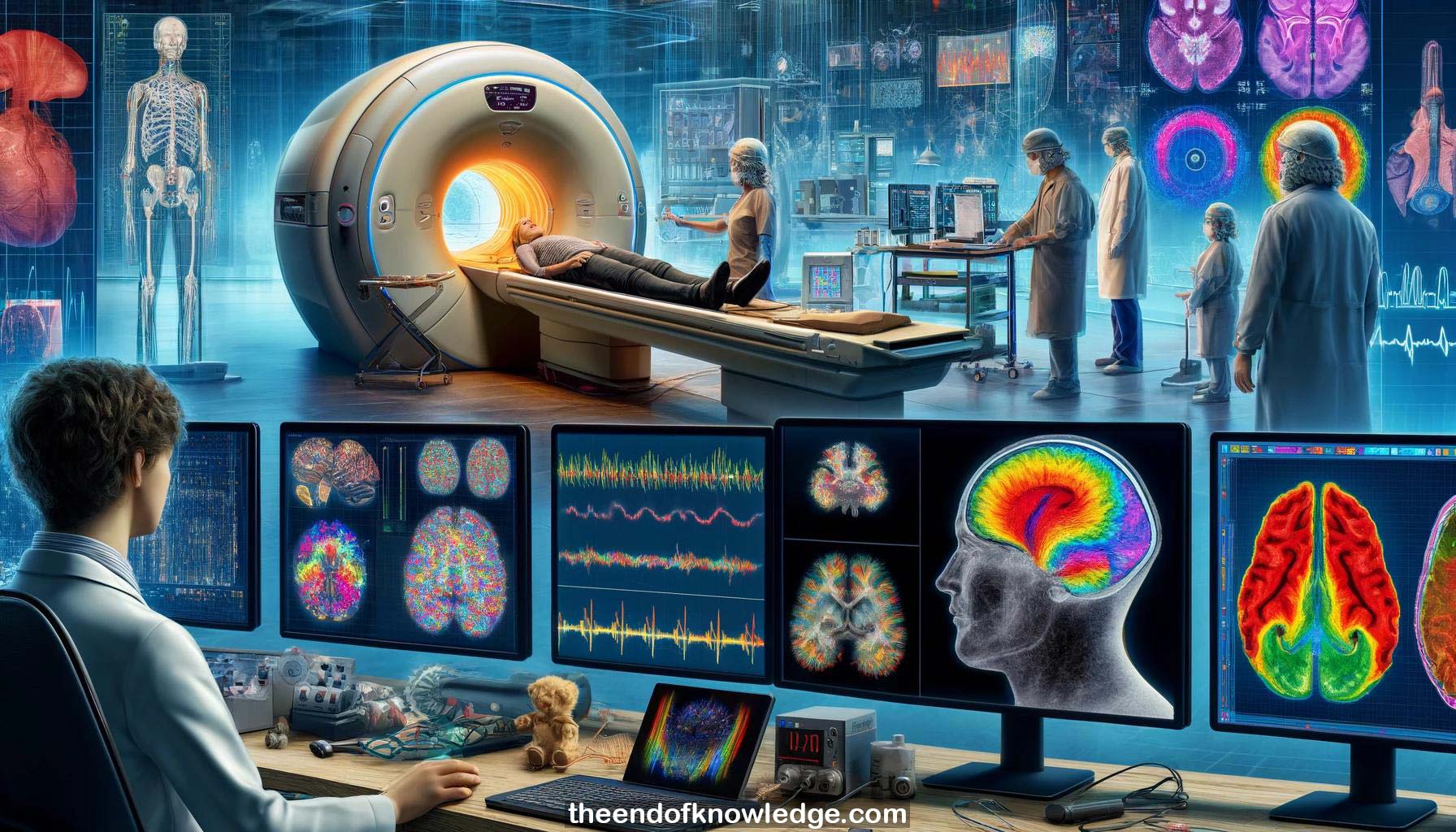 >
>
Concept Graph & Resume using Claude 3 Opus | Chat GPT4 | Llama 3:
Resume:
1.- Diagnosis of disorders of consciousness (DOC) and locked-in syndrome is challenging. Misdiagnosis rates can be high without proper behavioral assessments and neuroimaging.
2.- PET and fMRI scans can help differentiate between unresponsive wakefulness syndrome (UWS) and minimally conscious state (MCS) by detecting brain activity patterns.
3.- Prognosis and management options differ for UWS vs MCS patients. MCS patients may benefit from active interventions to promote consciousness.
4.- Brain-computer interfaces (BCIs) can potentially help locked-in patients communicate. BCIs can be invasive or noninvasive (EEG, fNIRS, fMRI).
5.- Typical BCI systems include signal acquisition, processing, feature extraction, classification and application to control devices or for rehabilitation. Requires subject training.
6.- P300, motor imagery, and steady-state visually evoked potentials (SSVEP) are common EEG signals used for BCIs in locked-in patients.
7.- P300 occurs when subjects attend to target stimuli. Useful for detecting auditory responses. Motor imagery changes sensorimotor rhythms for mental limb movements.
8.- SSVEP generates signals at the visual stimulation frequency over occipital cortex. Requires basic visual function and eye movement control. Higher SNR than MI.
9.- fMRI shows activation of supplementary motor area during motor imagery and parahippocampal gyrus during spatial navigation imagery in UWS patients who can follow commands.
10.- Positive BCI responses to motor imagery and visual paradigms in UWS/MCS patients is prognostic of regaining consciousness. Especially high in MCS.
11.- The research group developed motor imagery and SSVEP paradigms to screen DOC patients' ability to use different BCIs for communication.
12.- A hand raising motor imagery task was tested, providing simultaneous visual and auditory cues. Time-frequency EEG analysis showed task-related changes.
13.- An SSVEP paradigm was tested with stimuli at 8, 9.5, 11 and 12.5 Hz. MCS patients had higher accuracy than UWS.
14.- Challenges remain in using eye tracking in DOC patients who often cannot keep eyes open. Complex bedside environment also makes pupil detection difficult.
15.- Beyond diagnosis, BCIs can help locked-in patients communicate basic needs and connect with the outside world by bypassing impaired motor pathways.
16.- A brain switch can allow locked-in patients to express needs on-demand, like calling for care. False triggering is an issue with low SNR.
17.- A model-based brain switch using motor imagery was developed to improve reliability and enable intuitive asynchronous control in a 1-hour video playing task.
18.- BCIs can potentially control wheelchairs for locked-in patients, but safety is a concern with limited control dimensions. Shared control methods are promising.
19.- Leader algorithms and obstacle avoidance systems can make BCI wheelchairs safer by building maps of the environment and planning trajectories.
20.- Some locked-in patients may regain motor function with invasive BCIs. Testing motor behavior can provide more details about their state of consciousness.
21.- A motor imagery BCI was used to control a robotic arm in increasing difficulty tasks in healthy subjects. Group accuracy was >60%.
22.- Long-term (20-30 years) post-injury, motor imagery still activates expected regions in spinal cord injury patients, suggesting these representations persist.
23.- SSVEP may be easier than P300 for BCI control in locked-in patients, but requires visual ability. Patients should be tested to determine optimal paradigm.
24.- Predicting progression in locked-in patients is difficult. Traumatic cases may have better natural recovery than progressive diseases like ALS.
25.- Preliminary data from 1 ALS patient showed continued decline with BCI rehabilitation. Larger studies are needed to determine potential benefits in ALS.
26.- SSVEP requires focused attention directly on the stimulus. Users cannot attend elsewhere while controlling an SSVEP BCI.
27.- Barriers to BCI use in locked-in patients include difficulty identifying patients who could benefit, limited technologies, and invasiveness of some promising systems.
28.- Non-invasive BCIs like SSVEP and motor imagery are the current research focus, but invasive chips may enable more effective future systems.
29.- End-of-life decision making for locked-in patients is complex and should balance quality of life considerations as treatment options expand.
30.- The research group has ongoing collaborations to advance non-invasive BCI technologies and applications for locked-in and DOC patients.
Knowledge Vault built byDavid Vivancos 2024